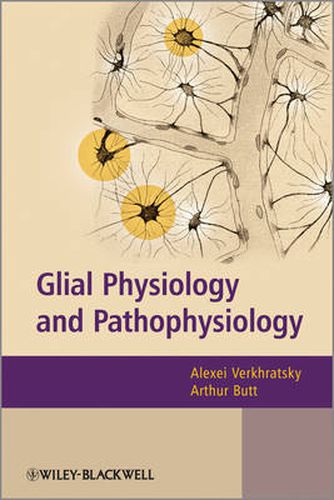Readings Newsletter
Become a Readings Member to make your shopping experience even easier.
Sign in or sign up for free!
You’re not far away from qualifying for FREE standard shipping within Australia
You’ve qualified for FREE standard shipping within Australia
The cart is loading…






Glial Physiology and Pathophysiology provides a comprehensive, advanced text on the biology and pathology of glial cells.
Coverage includes:
the morphology and interrelationships between glial cells and neurones in different parts of the nervous systems the cellular physiology of the different kinds of glial cells the mechanisms of intra- and inter-cellular signalling in glial networks the mechanisms of glial-neuronal communications the role of glial cells in synaptic plasticity, neuronal survival and development of nervous system the cellular and molecular mechanisms of metabolic neuronal-glial interactions the role of glia in nervous system pathology, including pathology of glial cells and associated diseases - for example, multiple sclerosis, Alzheimer’s, Alexander disease and Parkinson’s
Neuroglia oversee the birth and development of neurones, the establishment of interneuronal connections (the ‘connectome’), the maintenance and removal of these inter-neuronal connections, writing of the nervous system components, adult neurogenesis, the energetics of nervous tissue, metabolism of neurotransmitters, regulation of ion composition of the interstitial space and many, many more homeostatic functions. This book primes the reader towards the notion that nervous tissue is not divided into more important and less important cells. The nervous tissue functions because of the coherent and concerted action of many different cell types, each contributing to an ultimate output. This reaches its zenith in humans, with the creation of thoughts, underlying acquisition of knowledge, its analysis and synthesis, and contemplating the Universe and our place in it.
An up-to-date and fully referenced text on the most numerous cells in the human brain Detailed coverage of the morphology and interrelationships between glial cells and neurones in different parts of the nervous system Describes the role of glial cells in neuropathology Focus boxes highlight key points and summarise important facts Companion website with downloadable figures and slides
$9.00 standard shipping within Australia
FREE standard shipping within Australia for orders over $100.00
Express & International shipping calculated at checkout
Glial Physiology and Pathophysiology provides a comprehensive, advanced text on the biology and pathology of glial cells.
Coverage includes:
the morphology and interrelationships between glial cells and neurones in different parts of the nervous systems the cellular physiology of the different kinds of glial cells the mechanisms of intra- and inter-cellular signalling in glial networks the mechanisms of glial-neuronal communications the role of glial cells in synaptic plasticity, neuronal survival and development of nervous system the cellular and molecular mechanisms of metabolic neuronal-glial interactions the role of glia in nervous system pathology, including pathology of glial cells and associated diseases - for example, multiple sclerosis, Alzheimer’s, Alexander disease and Parkinson’s
Neuroglia oversee the birth and development of neurones, the establishment of interneuronal connections (the ‘connectome’), the maintenance and removal of these inter-neuronal connections, writing of the nervous system components, adult neurogenesis, the energetics of nervous tissue, metabolism of neurotransmitters, regulation of ion composition of the interstitial space and many, many more homeostatic functions. This book primes the reader towards the notion that nervous tissue is not divided into more important and less important cells. The nervous tissue functions because of the coherent and concerted action of many different cell types, each contributing to an ultimate output. This reaches its zenith in humans, with the creation of thoughts, underlying acquisition of knowledge, its analysis and synthesis, and contemplating the Universe and our place in it.
An up-to-date and fully referenced text on the most numerous cells in the human brain Detailed coverage of the morphology and interrelationships between glial cells and neurones in different parts of the nervous system Describes the role of glial cells in neuropathology Focus boxes highlight key points and summarise important facts Companion website with downloadable figures and slides